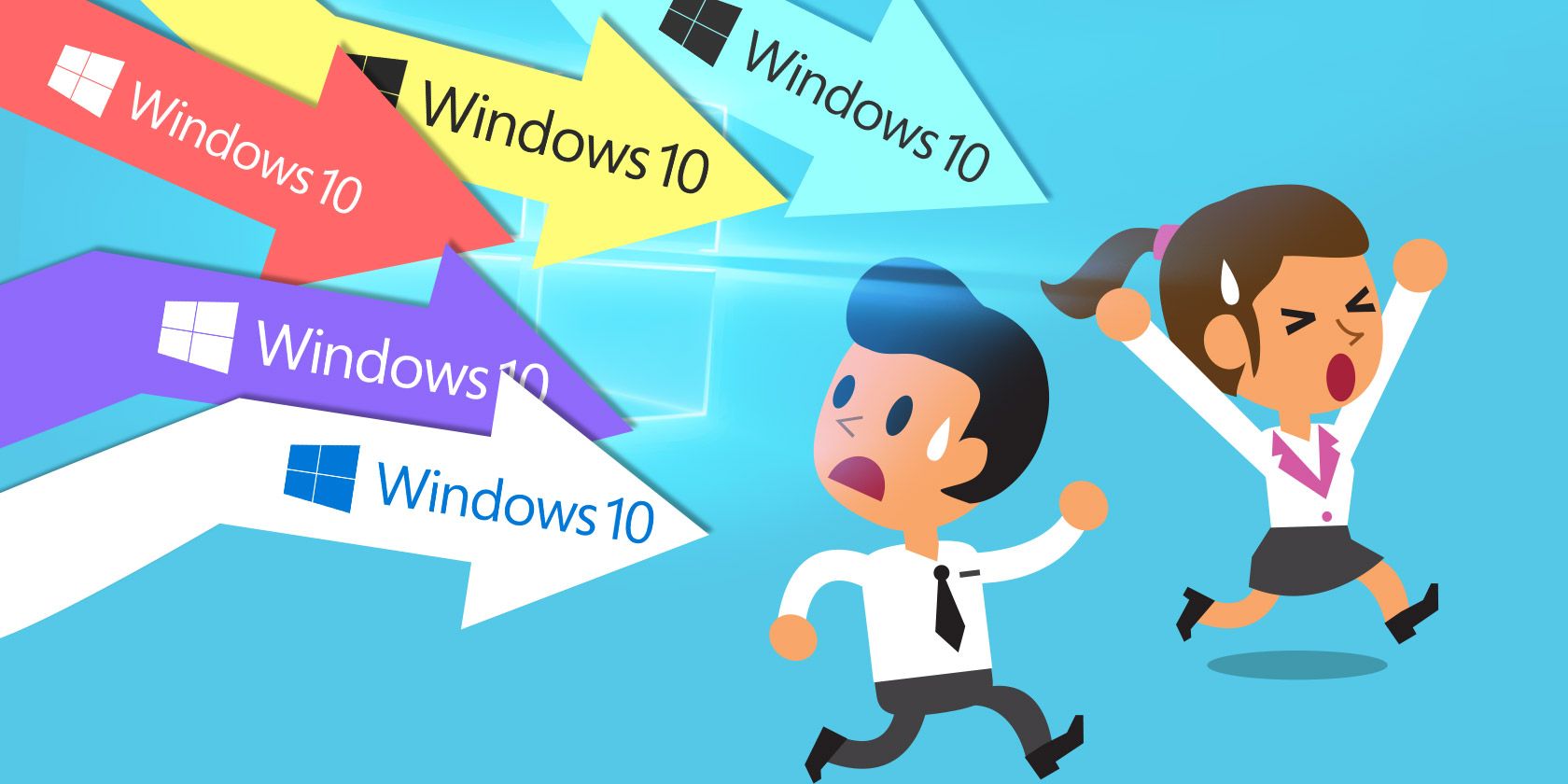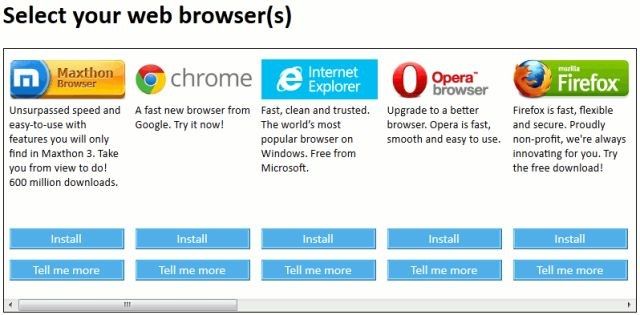One thing that really annoys us about Windows 10 is Microsoft's aggressive upgrade strategy.
Steve Jobs famously said "people don't know what they want until you show it to them." Microsoft must think this is true for Windows 10. And so its developers keep finding new ways to trick Windows 7 and 8 users into upgrading because surely they will like Windows 10 once the see it. Or they'll just surrender.
Personally, I do like Windows 10, but I also appreciate the reasons of those who oppose the upgrade. And I think what Microsoft has been doing is deeply disturbing and unethical. Microsoft acts as if its goal for 1 billion Windows 10 users supersedes the company's responsibility for its existing Windows customers.
This reckless battle has unintended consequences, which not only hurt Microsoft's customers, but also its business.
1. Lost Trust in Windows
When a live broadcast is interrupted by a stubborn Windows 10 upgrade notification, it sends a clear message to thousands of witnesses and millions of people worldwide: Windows cannot be trusted.
People feel confirmed that it's not just them. No, it's really not! Everybody using Windows 7 and 8 is suffering from Microsoft trying to get them to upgrade to Windows 10, by hook or by crook.
Many users who intended to stay with their old Windows and thought they denied the free upgrade offer, disover that Windows 10 was downloaded to their system nevertheless. Worse, some users get automatically upgraded to Windows 10 in their absence and -- as far as they are concerned -- against their will.
It's those WTF moments that make people lose trust in Windows and Microsoft. The stories spread and those that have been spared so far are terrified to suffer the same fate. So what do they do?
2. Users Disable Windows Update
Disabling Recommended updates is exactly what suspicious Windows 7 and 8 should be doing to stop the Windows 10 upgrade. However, a heads-up comes from Wes Miller, Research VP at Directions on Microsoft, who thinks people might go further than that:
And he's right. The aggressive Windows 10 upgrade causes deep distrust in any system update. This makes users disable not only Recommended updates -- which should be sufficient -- but also critical updates.
In Windows 7 and 8, completely disabling Windows Update is fairly easy. The downside is that it could lead to an increase in Windows systems infected with malware or otherwise paralyzed. It's ironic because Microsoft is supposedly pushing Windows 10 so hard to get users upgraded to a safer Windows environment.
Note: Instead of turning off critical Windows updates, we recommend that you disable only Recommended updates and install GWX Control panel or Never10. Also read everything we know about blocking the Windows 10 upgrade.
3. Lost Time, Money, and Bandwidth
As we've established, Windows 10 is automatically downloading and installing on countless computers, whether or not users want to upgrade. This is a violation of user choice and an incredible waste of resources.
Installation files get deleted and -- in the worst case -- auto-downloaded again. People lose bandwidth, to the point where their Internet data plans are exhausted.
And a computer that is upgrading to Windows 10 cannot be used. More time is wasted when users need to downgrade from Windows 10 to their previous Windows version. In some cases, people have lost files because the upgrade failed or they couldn't go back.
Some people even got blamed for upgrading a school or work computer to Windows 10, even though the computer did it all by itself.
Once they are running Windows 7 or 8 again, the fight continues. It's a battle that won't end until July 29, when the free Windows 10 upgrade expires.
Note: We recommend that you keep backups of your files and don't leave your Windows machine unattended. If you need to downgrade after an involuntary upgrade, open the Settings app (Windows key + I), head to Update & security > Recovery, and click Get started under Go back to Windows 7 / 8. Good luck!
4. Many Home Users Will Abandon Windows
What do you do when your trust has been violated and your resources wasted? You break up and start a new relationship.
Windows users have options. When it's time to buy a new device, Macs, Chromebooks, and Android devices are attractive candidates. Meanwhile, Linux runs on Windows hardware. Not surprisingly, worldwide Windows market share has dropped from 72.3% in June 2015, to 59% in April this year.
This drop isn't necessarily caused by Windows 10. It correlates with an overall trend to decommission bulky desktops and switch to lighter devices, which is why Android (from 10.15% to 20.16%) and iOS (from 8.12% to 9.25%) are on the rise. Linux has actually lost market share (from 1.28% to 1.10%). Meanwhile, Macs are up and down, oscillating between 6% in June 2015, down to 5.26% in December 2015, and up to 6.36% in April 2016.
At this point, Windows continues to be the most widely used operating system, but Windows 10 is clearly not helping to reverse the negative trend. Whether it's really causing the decline to accelerate, we can't tell for sure, but we do consider it plausible and we suspect it will continue.
5. Consumer Protection Looks Weak
Microsoft will eventually get sued over upgradegate. This is probably a calculated risk. Microsoft knows fair well that it could face court time in the EU, China, and other markets.
It happened before. In 2009 the European Commission passed a directive to stop Microsoft from bundling Internet Explorer with Windows. Instead, Microsoft had to provide users with a selection of possible browsers, the so-called browser ballot. This did cost Internet Explorer significant market share in Europe.
One challenge with the aggressive Windows 10 upgrade, however, is that it's a temporary offer, which leaves little time to prepare a trial and have it blocked before it expires.
In December last year, German consumer protection organizations issued a call to order to stop the forced download of Windows 10 installation files to Windows 7 and 8 machines. Microsoft told Heise Online that the company respects local legal requirements. Meanwhile, it's June, the Windows 10 push continues, and Microsoft has not been taken to court yet. In this case, consumer protection could prove to be a paper tiger.
In Microsoft We Trust No More
You'll be hard-pressed to find a Windows user who fully trusts Microsoft, this user included. I was excited for Windows 10. With new leadership, I anticipated a new Microsoft, one that would listen to its users and act in their interest. It's what they promised and Windows 10 did turn out to be a great operating system; for the most part.
However, I am deeply disappointed to see how Microsoft continues to abuse its users. Aggressive upgrades to Windows 10 is just part of the story. Forced updates in Windows 10, Start Menu ads, Windows Store bloatware, and privacy issues complete the grim scene.
How do you feel? Have you become a Windows 10 upgrade victim and what did you decide to do?
Image Credit: run away from by Jaaak via Shutterstock




